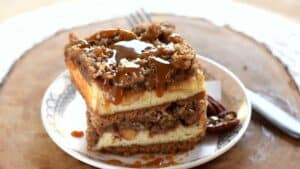It sneaks up on you, this croissant breakfast sandwich trend. One minute it’s a novelty on a brunch menu in some corner café, and the next bam it’s the darling of Michelin brunches, TikTok food trends, and ghost kitchen menus from Melbourne to Montreal.
But here’s the real secret: behind the flaky layers and yolk-dripping centers lies a high-performance breakfast item built for flavor, versatility, and operational efficiency. Chefs know. The best ones are already in the game. This article unpacks exactly why croissant breakfast sandwiches are not just a fleeting indulgence, but a culinary innovation with serious legs.
Let’s dig in.
The Rise of the Croissant Breakfast Sandwich
It didn’t happen overnight. But it sure feels like it did. The croissant breakfast sandwich began its climb when American breakfast culture started to merge more seriously with European café vibes. Somewhere around 2015, avocado toast got tired, and people started paying attention to texture.
Texture was everything. Enter: the croissant.
A 2019 market report by IBISWorld noted a 6.8% increase in demand for “premium handheld breakfast options” in the U.S. alone. Fast food chains saw it first McDonald’s re-launched their croissant sandwiches in selected test markets. Starbucks followed suit, pushing their “croissant bun” with slow-roasted ham and Swiss.
But those were the pop tracks. The indie records were in the chef-driven eateries, where laminated dough was being sourced from boutique bakeries and combined with heritage pork, truffled eggs, and aged Gouda.
What Makes the Croissant Sandwich So Damn Good?

We’re talkin’ science, not just fluff. The croissant’s structure created by the magic of laminated dough is a high-performance architecture. It’s 70% air, 20% butter, and 10% sheer edible arrogance.
A great croissant can hold heat like a pro, absorbs just enough yolk to be indulgent without falling apart, and provides this golden, flaky crunch that no brioche or English muffin can touch.
It’s fragile, yeah. But that’s the charm. A sandwich made with a croissant feels intentional. Not convenient, not lazy. It says you care. It says you’re not afraid of a little mess for a lot of joy.
Croissant Sourcing: Don’t Cheap Out Here
You can make the most beautifully balanced filling in the world, but if you stick it inside a soggy, supermarket croissant that tastes like air and regret you’ve lost the war.
Restaurants with high-volume breakfast programs often go with par-baked, frozen, high-butter European imports. These offer consistency and structure. You want something with at least 24 layers, ideally 27. (Yes, it matters.)
In-house baking? Hats off to you. That’s a full-time job. But if you’re serving a high-ticket brunch, it might be worth the extra labor. A hand-laminated croissant made with cultured butter from Normandy will win you a cult following. People will travel for it. They’ll post it before they eat it.
Pro tip: avoid croissants that crumble too easily. There’s a balance you want crunch, not confetti.
What Goes Inside: Component Breakdown
Let’s talk fillings. Because this is where the art and engineering really collide.
Eggs: Soft, Not Sad
The egg is your anchor. Scrambled, poached, over-easy whatever style you choose, it needs to be soft, luscious, and just under the point of done.
Avoid dry scrambled eggs like the plague. They taste like defeat. Go low and slow. Mix in a bit of crème fraîche or milk to keep ‘em tender. Some chefs bake their eggs sous-vide in ramekins for uniform texture. If you’re using a poached egg, strain it before placing no one wants watery bottoms.
Cheese: Think Melt, Not Just Flavor
You’re not putting cheese on a cracker here. It’s gotta melt. That means understanding how each cheese behaves under heat. Gruyère melts like a dream and adds nutty richness. Cheddar brings tang and body. Fontina is buttery and gentle. American cheese? Don’t scoff it melts better than almost anything else.
Use slices, not shreds. It’s neater, faster, more reliable. And for God’s sake, toast the croissant cut-side down on the flat top before building. It helps the melt, and adds another layer of crisp.
Meat: Fat = Flavor
You need fat. Bacon, sausage, prosciutto, ham it should have visible fat. Lean meats dry out under heat. A thick-cut slab of applewood bacon will beat thin crispy strips every time. If you’re using sausage, form it to match the croissant shape so every bite hits.
Plant-based? Go with fatty, seasoned mushroom mixes or smashed avocado with chili oil. Avoid tofu blocks unless you’re pressing and seasoning the hell out of them.
Sauces: Balance is Queen
This is where you go chef-y. Hollandaise, aioli, hot honey, tomato jam, miso mayo whatever you use, keep it in check. One swipe, not three. You want accent, not chaos.
Avoid watery sauces. They destroy croissant integrity. Emulsified is your friend. And if you’re doing a runny yolk egg, maybe skip the sauce altogether it becomes its own condiment.
Assembly: It’s Not Just a Stack

Build it like you mean it. Croissant cut horizontal, not hinged none of this flap business. Toast both sides lightly. Sauce goes on both interiors, but thin. Cheese on bottom, then egg, then meat. That order matters. Meat on top helps hold the structure as it gets bitten through.
Wrap tightly if it’s to-go. Let it rest for 2 minutes before serving gives the layers time to mingle.
Pro Trick: Pressed Croissant Sandwich
Ever tried a lightly pressed croissant sandwich on a plancha or panini grill? Game changer. It fuses the layers just enough to eat clean but keeps the inside molten. Not always traditional, but if you’re doing high-volume service, it’s a dream.
Misconceptions That Need Retiring
“Croissants are too delicate for sandwiches.” Nope. You’re just using the wrong ones. A properly structured croissant will hold just fine if toasted and built smart.
“They’re too expensive for menus.” False. Yes, your food cost might edge up, but so will your perceived value. People will pay $12-$18 for a premium croissant sandwich without blinking.
“They’re too messy.” That’s kind of the point. Wrap it right. Serve it with a napkin. Messy = indulgent = memorable.
Global Spins and Emerging Trends
Chefs worldwide are putting their stamp on the croissant sandwich.
In Tokyo, it’s miso scrambled eggs with nori butter and katsu bacon. In Paris, it’s all about Jambon de Bayonne, soft egg, and truffle aioli. In L.A., they’re smashing hash browns into the build. In Copenhagen, it’s smoked mackerel and pickled egg with dill crème.
Plant-based builds are also having a moment. Think vegan “bacon” made from rice paper, turmeric tofu scramble, and cashew hollandaise. People want feel-good food that still feels fancy.
Ghost kitchens and grab-n-go cafés are jumping on the trend because croissant sandwiches photograph beautifully. Social media drives sales, and nothing says brunch flex like a yolk explosion over laminated dough.
Operations & Profitability
From an ops standpoint, croissant breakfast sandwiches are deceptively smart.
You can prep all components ahead egg patties, bacon slices, sauces then build and heat to order in under 3 minutes. Par-baked croissants bake off in batches and hold well. Food cost averages between 28-32%, depending on ingredients, but markup can hit 250% without pushback.
They work well for dine-in, takeout, and catering. And because they feel special, they justify premium pricing. You don’t even need sides half the time.
Final Thoughts: Why Croissant Breakfast Sandwiches Are Worth Your Time
Look, food trends come and go. But the croissant breakfast sandwich has staying power.
It delivers on taste, texture, versatility, and visual appeal. It fits upscale brunch spots, fast-casual concepts, and artisanal bakeries alike. It can be low-brow or luxe, vegan or carnivorous, delicate or dirty.
So if you’re in the food business and still sleeping on croissant sandwiches… well, you’re missing a golden, buttery boat.
Actionable Takeaways:
- Source high-quality croissants. Cheap ones will ruin your build.
- Use soft, flavorful eggs. Never dry.
- Prioritize melt-friendly cheese and fatty, well-seasoned meats.
- Keep sauces tight and balanced.
- Toast and build with intention this isn’t a casual sandwich.
Now go. Build the croissant sandwich your brunch crowd didn’t even know they were dreaming about. And maybe just maybe give ’em a second napkin. They’ll need it.









